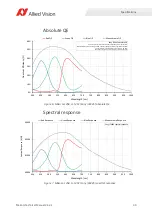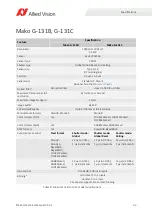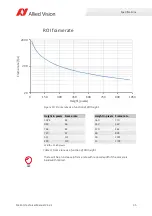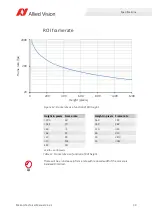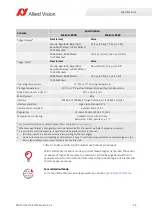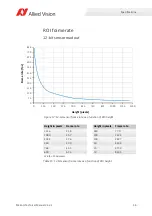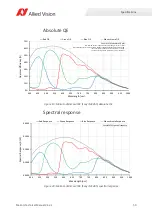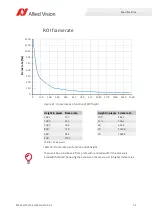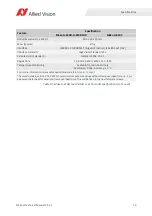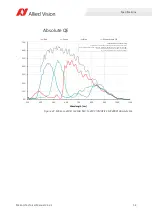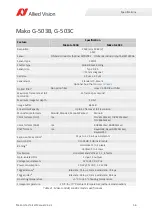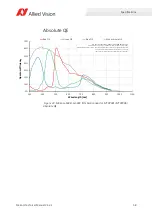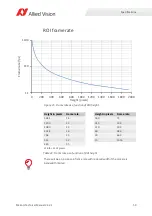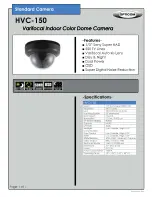
Specifications
44
Mako G Technical Manual V4.2.2
Trigger latency
3
Pixel format
Value
Mono8, BayerRG8, BayerRG12,
BayerRG12Packed, YUV411Packed,
YUV422Packed
58.2
μ
s (10-bit), 75.6
μ
s (12-bit)
RGB8Packed, BGR8Packed,
YUV444Packed
116.4
μ
s (10-bit), 151.2
μ
s (12-bit)
Trigger jitter
3
Pixel format
Value
Mono8, BayerRG8, BayerRG12,
BayerRG12Packed, YUV411Packed,
YUV422Packed
9.6
μ
s (10-bit), 12.5
μ
s (12-bit)
RGB8Packed, BGR8Packed,
YUV444Packed
19.3
μ
s (10-bit), 25
μ
s (12-bit)
Operating temperature
+5°C to +45°C housing temperature
Storage temperature
-10°C to +70°C ambient temperature (without condensation)
Body dimensions (L x W x H)
60.5 x 29 x 29 mm
Mass (typical)
80 g
Interface
IEEE 802.3 1000BASE-T (Gigabit Ethernet), IEEE 802.3af (PoE)
Interface standard
GigE Vision Standard V1.2
Camera control standard
GenICam SFNC V1.2.1
Regulations
CE, RoHS, REACH, WEEE, FCC, ICES
Temperature monitoring
Available for main board only.
Resolution: 0.031; Accuracy: ± 1 °C
1
For more information on available optical filters see the
2
Whenever pixel format is changed, Exposure will adjust itself to the nearest multiple of Exposure increment.
3
It is possible to start the exposure of next frame while previous frame is read out:
•
Idle state: sensor is ready and camera is idle, waiting for the next trigger.
•
Frame valid state: sensor is reading out and camera is busy. If next frame is requested by an external trigger in this
state, higher latency may occur as compared to the Idle state.
With 10-bit sensor readout mode you can achieve a higher frame rate. The sensor
is capable of higher frame rates but readout is limited by GigE bandwidth and
exposure value. You can improve frame rates with a reduced region of interest and
shorter exposure values.
SensorReadoutMode
For more information on
SensorReadoutMode
, see the
GigE Features Reference
.
Feature
Specification
Mako G-234B
Mako G-234C
Table 14: Mako G-234B, G-234C model specifications (continued)
i

